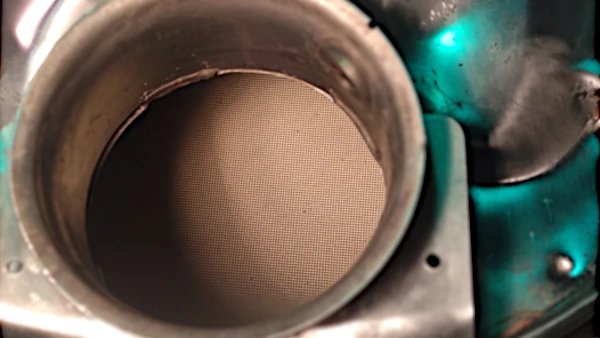The Remarkable Catalytic Converter: Cleansing the Vehicle's Exhaust
In the quest for cleaner air and reduced environmental impact, the automotive industry has introduced a crucial component known as the catalytic converter. This emissions control device is responsible for removing harmful greenhouse gases from a vehicle's exhaust, making it an indispensable part of modern automobiles.
Understanding the Catalytic Converter
The catalytic converter is a complex piece of engineering that serves a vital role in reducing the environmental footprint of internal combustion engines. Here are some key aspects of this remarkable device:
Conversion of Harmful Compounds
The catalytic converter's primary function is to convert hazardous compounds, such as nitrogen oxides (NOx), carbon monoxide (CO), and hydrocarbons (HC), into less harmful substances. Through a series of chemical reactions, it transforms these pollutants into carbon dioxide (CO2), water vapor (H2O), and nitrogen gas (N2). This conversion process is essential for mitigating the negative impact of vehicle emissions on air quality and the environment.
Utilization of Rare Earth Metals
Catalytic converters rely on rare earth metals, including platinum, rhodium, and palladium, as catalysts to facilitate the necessary chemical reactions. These metals play a pivotal role in the conversion of toxic exhaust gases into more benign compounds. Their unique properties make them highly effective in promoting these reactions.
Historical Evolution
The introduction of catalytic converters in American production cars can be attributed to stringent regulations imposed by the Environmental Protection Agency (EPA). In 1975, the EPA implemented regulations aimed at reducing toxic emissions from vehicles. These regulations pushed automakers to adopt catalytic converters as a means to comply with the new environmental standards. Since then, catalytic converters have become a standard feature in nearly all gasoline-powered vehicles, symbolizing a significant step toward cleaner air and reduced environmental impact.
Types of Catalytic Converters
There are two main types of catalytic converters:
- Two-way catalytic converters: These converters reduce carbon monoxide (CO) and hydrocarbons (HC) emissions.
- Three-way catalytic converters: These converters reduce nitrogen oxides (NOx), carbon monoxide (CO), and hydrocarbons (HC) emissions.
Three-way catalytic converters are more common than two-way catalytic converters and are required on all gasoline-powered vehicles sold in the United States since 1981.
Working Principle of Catalytic Converters
Catalytic converters work by using a combination of heat and precious metal catalysts to convert harmful pollutants in vehicle exhaust into less harmful gases. The precious metal catalysts, which typically include platinum, rhodium, and palladium, coat the internal surface of the converter.
As the hot exhaust gases pass through the converter, they come into contact with the precious metal catalysts. This causes a series of chemical reactions to occur, which convert the pollutants into less harmful gases.
Benefits of Catalytic Converters
Catalytic converters provide a number of important benefits, including:
- Reduced emissions: Catalytic converters play a vital role in reducing air pollution from vehicles. By converting harmful pollutants into less harmful gases, they help to improve air quality and protect the environment.
- Improved fuel efficiency: Catalytic converters can also help to improve fuel efficiency by reducing engine backpressure. This allows the engine to operate more efficiently and burn fuel more completely.
- Extended engine life: Catalytic converters can also help to extend engine life by reducing the amount of harmful deposits that accumulate on the exhaust systems internal components.
Conclusion
Catalytic converters are essential components of modern vehicles that play a critical role in reducing air pollution and improving fuel efficiency. These remarkable devices are the result of decades of research and development, and they continue to play a vital role in our efforts to protect the environment.
Additional Interesting Facts about Catalytic Converters:
- The average catalytic converter contains about 3 grams of platinum, 0.5 grams of rhodium, and 1.5 grams of palladium.
- Catalytic converters are required by law on all gasoline-powered vehicles sold in the United States.
- Catalytic converters can operate at temperatures of up to 1,500 degrees Fahrenheit.
- Catalytic converters can remove up to 99% of harmful pollutants from vehicle exhaust.
- Catalytic converters are recyclable and can be processed to recover the precious metals they contain.
Identifying and Dealing with Problems in the Catalytic Converter
